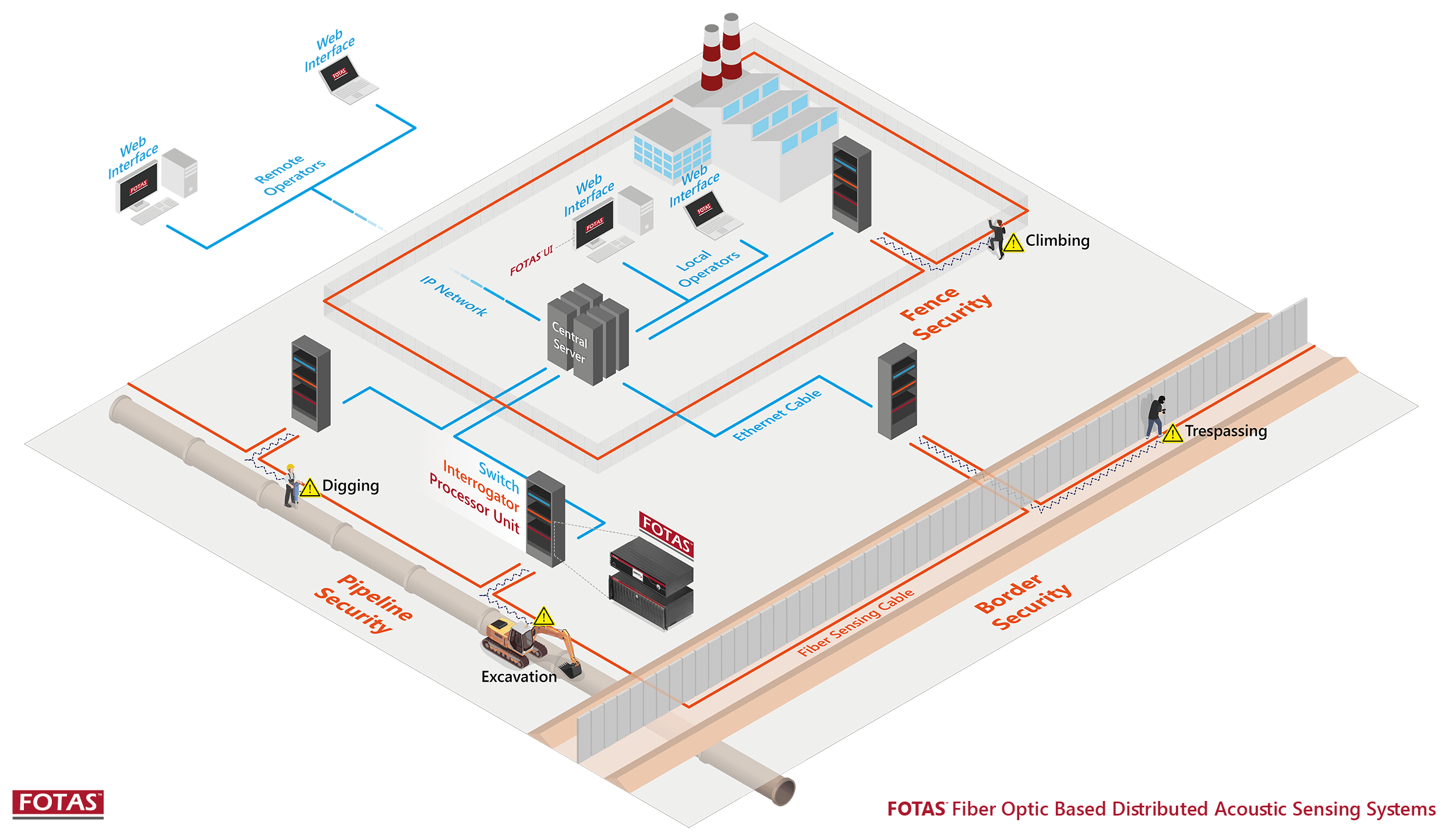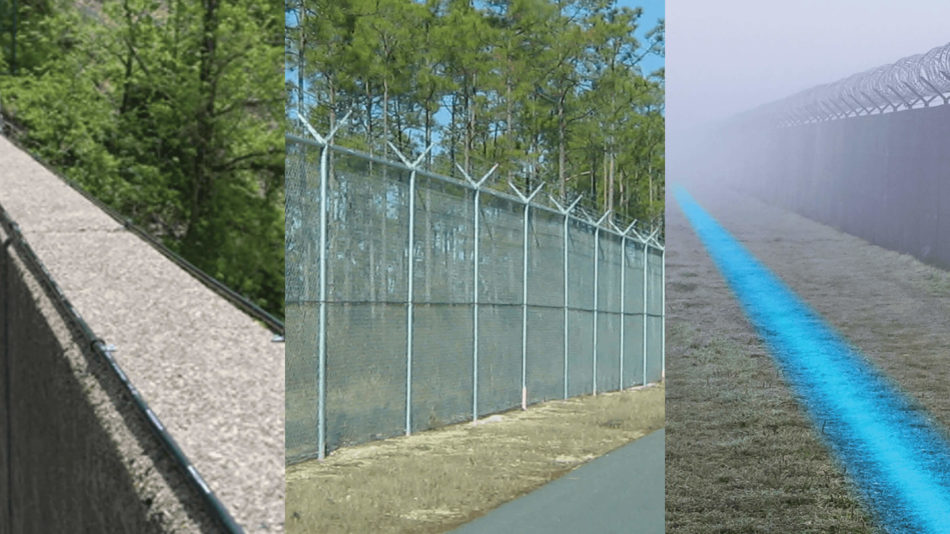Why Fiber Optic Safety And Security Equipments Are the Future of Security
The transition to fiber optic safety and security systems marks a significant innovation in the world of protection, driven by their remarkable information transmission capabilities and durability to outside interferences. These systems not only promote faster and extra trusted communication but also provide an economical service with lowered upkeep requirements. As the landscape of protection evolves alongside arising modern technologies such as AI and IoT, the capacity for optical fiber to improve and redefine safety facilities comes to be progressively apparent. Nonetheless, the ramifications of these developments raise crucial questions concerning the future of safety and security actions and their effectiveness in an ever-changing setting.
Benefits of Fiber Optic Equipments
Among the primary advantages of fiber optic systems is their premium data transfer capability, which promotes the transmission of big volumes of information over fars away without substantial loss. This characteristic is particularly valuable for safety and security applications that need the continuous monitoring and transfer of high-definition video clip feeds, sensor data, and various other important info. Fiber optics can accommodate the growing needs of contemporary security systems, ensuring that data remains undamaged and dependable.
Furthermore, fiber optic wires are less prone to electro-magnetic disturbance, which can be a considerable problem in atmospheres with different digital gadgets. This resistance boosts the honesty of the information being transferred, therefore reducing the risk of data violations or system failures. Fiber optic systems are inherently more safe than traditional copper cables, as touching right into a fiber optic line without discovery is exceedingly challenging.
The toughness of fiber optic cords additionally contributes to their appeal. They are resistant to ecological factors such as dampness and temperature level fluctuations, decreasing upkeep costs and increasing system longevity. In general, these advantages position fiber optic systems as a durable and effective option for modern-day safety facilities, guaranteeing reliable and safe and secure data transmission.
Enhanced Information Transmission Rate

The capacity to send large quantities of information quickly assists in the seamless assimilation of high-definition video feeds and progressed analytics. Protection systems can now refine and examine info in real-time, boosting response times and situational awareness. Additionally, fiber optic links sustain longer transmission ranges without destruction of signal top quality, making them ideal for expansive protection networks.
The raised speed of fiber optic systems not just boosts the efficiency of safety and security operations yet likewise reduces latency. This is especially crucial in critical scenarios where timely decision-making can stop safety and security violations or reduce potential dangers. As organizations continue to focus on security and effectiveness, the demand for fast and dependable data transmission will undoubtedly strengthen fiber optic systems as a foundation of contemporary security facilities.
Resistance to Disturbance
Fiber optic safety and security systems constantly demonstrate exceptional resistance to electromagnetic disturbance, an essential advantage in atmospheres susceptible to electronic noise. Unlike typical copper wires, which can be negatively affected by electromagnetic fields, radio regularity interference, and other forms of electric disruption, fiber optic cables make use of light to transfer information. This intrinsic building guarantees that the signals continue to be clear and unchanged, no matter bordering digital task.
The usage of glass or plastic fibers in fiber optic innovation produces an obstacle against disturbance, permitting trustworthy information transmission also in challenging situations such as commercial centers, urban areas with high electronic website traffic, or areas near radio towers. This particular substantially reduces the likelihood of signal degradation or loss, making fiber optic systems especially ideal for safety and security applications where integrity and accuracy of information are critical.
Moreover, this resistance to interference enhances the general efficiency and reliability of security systems, making certain that monitoring and alert systems function perfectly. In a world where security is significantly threatened by advanced technologies, the resilience of fiber optic systems attracts attention as a pivotal attribute, strengthening their standing as a necessary element of modern protection facilities.
Cost-Effectiveness Over Time
Substantial cost savings can be achieved over time with the implementation of fiber optic security important source systems. While the first financial investment might appear higher compared to conventional copper-based systems, the lasting monetary benefits come to be obvious via minimized functional and maintenance expenses (fiber security). Fiber optic cable televisions are inherently Discover More Here extra resilient and much less prone to environmental variables, which converts to reduce substitute and repair service expenses over their lifespan
Moreover, fiber optic systems require less power to operate, which further lowers power costs. Boosted information transmission capacities enable less repeaters and amplifiers, minimizing devices financial investment and streamlining installment procedures. The scalability of these systems additionally adds to cost-effectiveness, as companies can increase their protection infrastructure without sustaining substantial added expenses.
An additional variable to consider is the raised efficiency in monitoring and action capacities that optical fiber provide. Improved real-time data transmission can cause quicker case response times, possibly mitigating losses and responsibilities related to safety violations. Altogether, the long-term benefits of fiber optic safety and security systems not just justify the first expenditure however also place them as a financially prudent choice for companies looking for robust protection services.

Future Developments in Safety And Security
Progressing technologies are readied to transform protection systems, integrating expert system (AI) and equipment learning to boost hazard discovery and response capabilities. These innovations will enable safety and security systems to evaluate substantial quantities of information in real-time, identifying patterns and anomalies that show prospective dangers. This positive approach will enable faster decision-making and much more reliable occurrence actions.
Additionally, the unification of the Web of Points (IoT) is paving the means for interconnected safety tools, offering detailed security and monitoring. Smart sensors can communicate information concerning ecological modifications, right here while automated signals can inform safety employees immediately of dubious activities.
In addition, the development of biometric modern technologies will certainly additionally boost protection systems. Facial recognition, finger print scanning, and retina identification are becoming more advanced, giving layers of authentication that are challenging to bypass.
Verdict
In conclusion, fiber optic security systems stand for a considerable development in security innovation, using unrivaled information transmission speed, resistance to electromagnetic interference, and long-term cost-effectiveness. As the demand for innovative safety remedies remains to expand, the assimilation of fiber optics with arising technologies such as AI, IoT, and biometrics will better boost security facilities (fiber security). The combination of these technologies will certainly make certain an extra safe and responsive setting, strengthening optical fiber as a foundation of future security systems